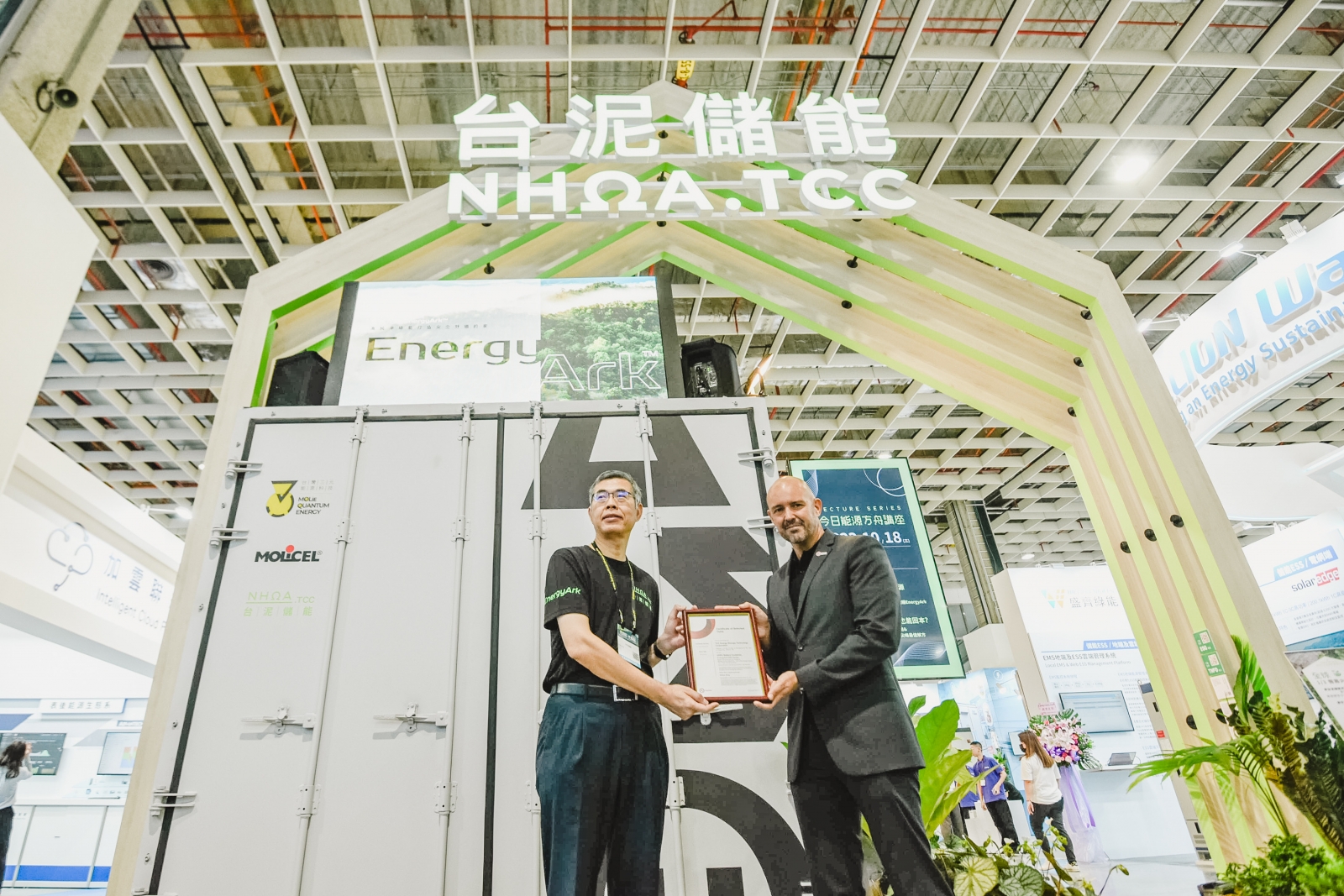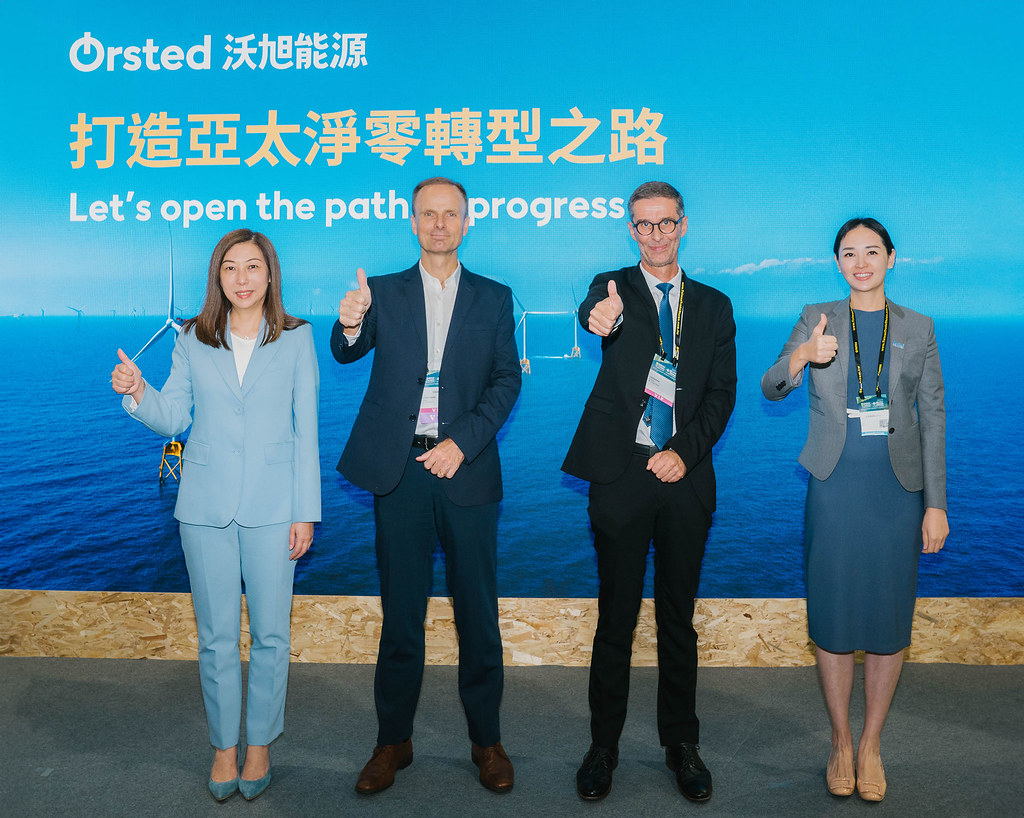The annual Energy Taiwan trade show returned to Taipei on Oct 18 in conjunction with Net-Zero Taiwan, focusing on carbon reduction and pathways to a renewable energy future. The event featured 1,275 booths and attracted roughly 25,000 attendees over three days, the largest in scale to date.

Energy Taiwan opens with record-breaking 1,275 booths. (Photo: Hsu Tsu-lin)
According to organizers the Taiwan External Trade Development Council (TAITRA) and the Green Energy and Sustainability Alliance (GESA), this year’s event saw a 25% increase in attendance and 1.5 times more international buyers than last year’s, with Japan, Singapore, Malaysia, the United States, and Vietnam making up the top five buyers, pointing to robust green industry.
To assist business with energy saving, carbon footprint verification, financing, and taxation amid the pursuit of green transition and green finance trends, Net-Zero Taiwan established the Green Finance Pavilion this year to support businesses’ green transformation and facilitate the adoption of zero-carbon energy and new technologies from a financial standpoint, said TAITRA.
Taiwan Cement Corp marks presence with energy storage innovation
The event showcased the latest energy innovations spanning solar, wind, hydrogen, geothermal, and ocean energy. Hydrogen came into limelight as an alternative fuel to oil and gas, with Howden Taiwan and Linde LienHwa introducing hydrogen technologies and equipment.
Taiwan Cement Corp (TCC) participated in the event for the first time, presenting its business scope in geothermal and ocean energies and unveiled the “EnergyArk,” an energy storage container using its patented Ultra-High Performance Concrete (UHPC).

TCC’s EnergyArk receives recognition from the National Fire Agency and National Chung-Shan Institute of Science & Technology. (Photo: TCC)
According to TCC, EnergyArk is the world’s first energy storage product combing low-carbon material and renewable energy. The concrete-made energy storage container is fireproof, weatherproof, and resistant to heat, allowing fire risks to be minimized.
EnergyArk has advantages over the metal-based container in heat conductivity, saving 20% to 30% of the electricity used in cooling system, said TCC, adding that the UHPC has a life cycle of 100 years, which helps cut 50% of carbon emissions compared to a metal container.
Delta Electronics introduces energy management solution
As the EU’s Carbon Border Adjustment Mechanism (CBAM) has kicked in this October, industries across the globe are planning green transition to enhance competitiveness. Telecom solution provider Delta Electronics introduced the “DeltaGrid,” an energy management system designed to help businesses create ISO-conforming carbon footprint report, with a system lifespan of 10 to 20 years.

Yang Chih-chung, service management manager of Delta Electronics, introduces the latest energy management software. (Photo: Hsu Tsu-lin)
Delta Electronics also launched the “Magic Cube,” a grid-scale energy storage system with a container size of 10 foot and 1.4 MW of capacity, making it easy to deliver and install. The product can accommodate different projects for expansion to reach high power density and capacity as well as optimal land allocation.
Orsted calls for consolidation of regional cooperation
Orsted, the Danish offshore wind giant, launched the white paper “Let’s open the path to progress in Asia Pacific” during the event, calling for close collaboration with governments, industry and communities to facilitate offshore wind development and achieve green transition in Asia Pacific.

Orsted releases the first white paper on the APAC’s offshore wind development. (Photo: Orsted)
Asia Pacific is important to global goal of net zero, for more than one third of the companies committed to RE100 are headquartered in the region. With huge demand for renewables, the region, however, lags behind in terms of supply chains, logistics, and talent, said Orsted.
The white paper identities four areas for improvement, including expanding wind project size to attract investments, accelerating and simplifying approval process, creating long-term value instead of focusing on prices, and building a competitive regional supply chain in collaboration.
At the Net-Zero Summit held during the event, Deputy Minister Kao Shien-quey (高仙桂) of the National Development Council said that the central government has increased climate budget for 2024 by 45.7% from 2023, allocating a total of NT$96.4 billion to complete climate change legislation and push forward sustainable finance.








